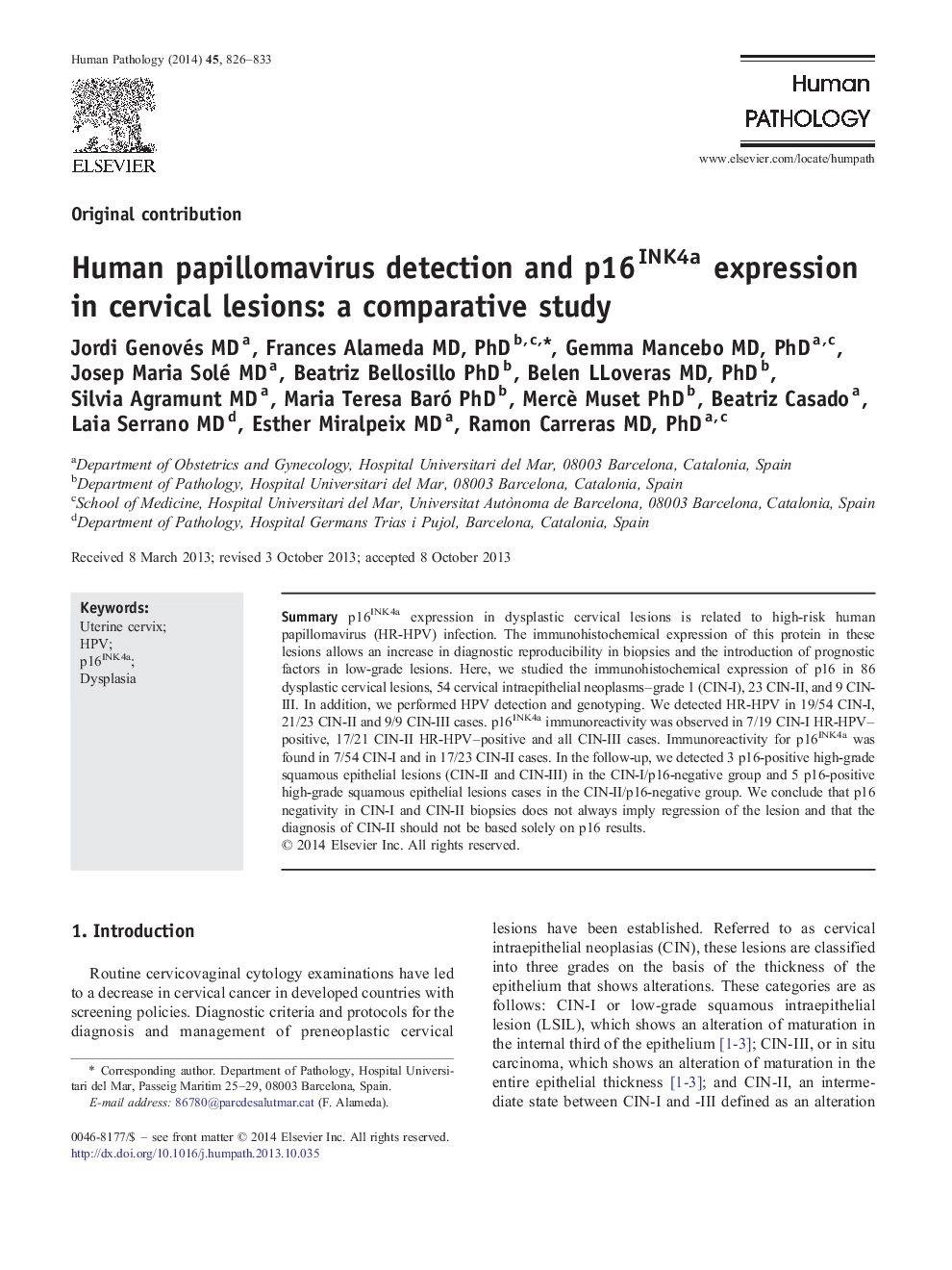| Article ID | Journal | Published Year | Pages | File Type |
|---|---|---|---|---|
| 4132992 | Human Pathology | 2014 | 8 Pages |
Summaryp16INK4a expression in dysplastic cervical lesions is related to high-risk human papillomavirus (HR-HPV) infection. The immunohistochemical expression of this protein in these lesions allows an increase in diagnostic reproducibility in biopsies and the introduction of prognostic factors in low-grade lesions. Here, we studied the immunohistochemical expression of p16 in 86 dysplastic cervical lesions, 54 cervical intraepithelial neoplasms–grade 1 (CIN-I), 23 CIN-II, and 9 CIN-III. In addition, we performed HPV detection and genotyping. We detected HR-HPV in 19/54 CIN-I, 21/23 CIN-II and 9/9 CIN-III cases. p16INK4a immunoreactivity was observed in 7/19 CIN-I HR-HPV–positive, 17/21 CIN-II HR-HPV–positive and all CIN-III cases. Immunoreactivity for p16INK4a was found in 7/54 CIN-I and in 17/23 CIN-II cases. In the follow-up, we detected 3 p16-positive high-grade squamous epithelial lesions (CIN-II and CIN-III) in the CIN-I/p16-negative group and 5 p16-positive high-grade squamous epithelial lesions cases in the CIN-II/p16-negative group. We conclude that p16 negativity in CIN-I and CIN-II biopsies does not always imply regression of the lesion and that the diagnosis of CIN-II should not be based solely on p16 results.
